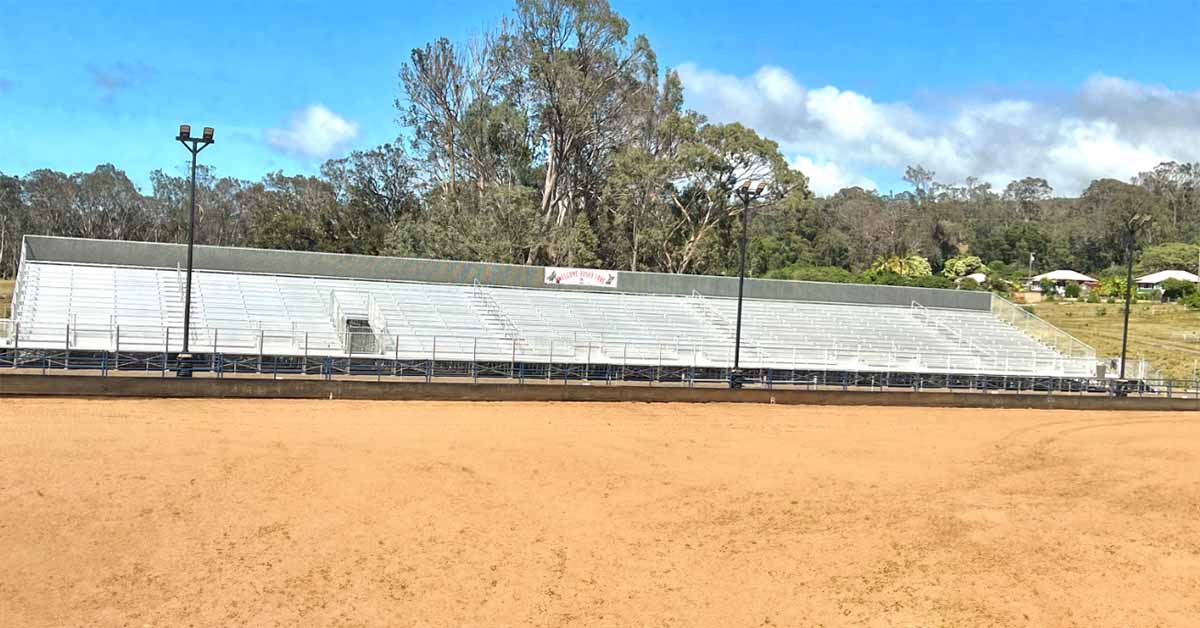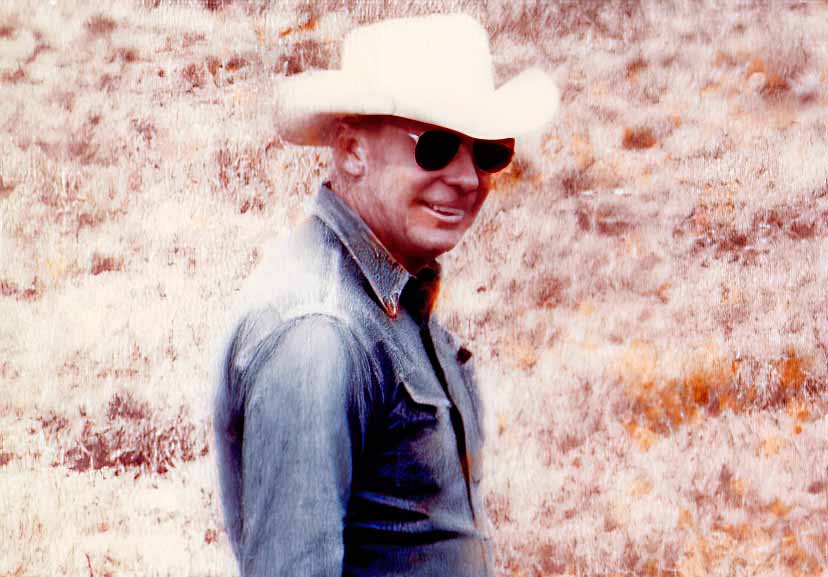
Oskie Rice Arena – Makawao, Maui
The Paniolo Preservation Society, like everyone, has been deeply saddened by the Maui wildfires, and we are sending aloha, prayers, and whatever support we can. With Maui in mind, we thought it might be a good time to pay tribute to their paniolo community, our upcountry ‘ohana across the channel.
Much like Hawai‘i Island, Maui welcomed the first cowboys to help wrangle wild pīpī. After the Great Mahele, their hard work eventually grew into family ranches, raising cattle for beef to trade with the whaling ships in Lahaina Harbor. Ranching grew as business grew, establishing itself as valuable economic asset and a way of life for the tight knit paniolo community
Also like the Big Island, many of today’s Maui ranches are run by multi-generational families, some represented in the Paniolo Hall of Fame. One interesting example is PHOF Class of 2009 inductee Oskie Rice.
Oskie’s father, Harold “Pop” Rice purchased Ka‘ono‘ulu Ranch in 1916. He married Charlotte Baldwin, daughter of sugar baron Charles Baldwin, and set out to build a successful operation. Pop expanded the ranch to include new meat markets selling beef and local pork, cornfields for feed, a dairy and poultry farm, and stables to breed and train top quality polo ponies.

Oskie Rice – photo courtesy Paniolo Hall of Fame
Their son, Harold Frederick “Oskie” Rice was born and raised on the ranch, a cowboy and outdoorsman practically from Day One. Oskie grew up alongside his cousins, hunting, fishing, and learning the paniolo trade, which included making their own rawhide ropes, kaula ‘ili. In fact, one story says that while the boys were at school on the East Coast, their dormitory caught fire—and the young paniolo helped their classmates climb out windows with their kaula ‘ili.
Back on the ranch after graduation, Oskie was an avid polo player, part of the legendary Maui Polo Club team that traveled to Honolulu and to defeat teams from Hawai‘i, the continent, and Australia. In 1955, Oskie and brother in law Garfield Rice purchased Ka‘ono‘ulu.
That same year, the Maui Roping Club was established, and Oskie leased land to them for a rodeo arena in Makawao—for $10 per year. On a Sunday afternoon in 1956, fifty rodeo competitors from three islands paraded into the new Oskie Rice Arena carrying American and Hawaiian flags. In front of over 2,000 spectators, the first Makawao Rodeo began.
It has since been held annually on the 4th of July (except for the pandemic pause), and is the largest competitive rodeo in Hawai‘i. In 2020, the arena was rebuilt, enlarged and modernized; event organization changed, and the rodeo renamed to the Makawao Stampede.
Today’s Ka‘ono‘ulu is run by descendants and members of the extended Rice and King ‘ohana. They continue the paniolo tradition of hard work, loyalty, land stewardship and love of life. And they carry on an abiding commitment to care for their community. During the fire, the Oskie Rice Arena housed upwards of 80 farm animals, including horses, cows, cats, dogs and chickens. They also hosted and provided meals for firefighters, volunteers and others in need.
We’re pretty sure Pop and Oskie would be very proud.
The Rice-King-Miranda-Baldwin family and Ka‘ono‘ulu is just one ranch among the many legacy Maui ranches who have made important contributions to the island’s history and paniolo culture. Hats off to the Maui paniolo.
